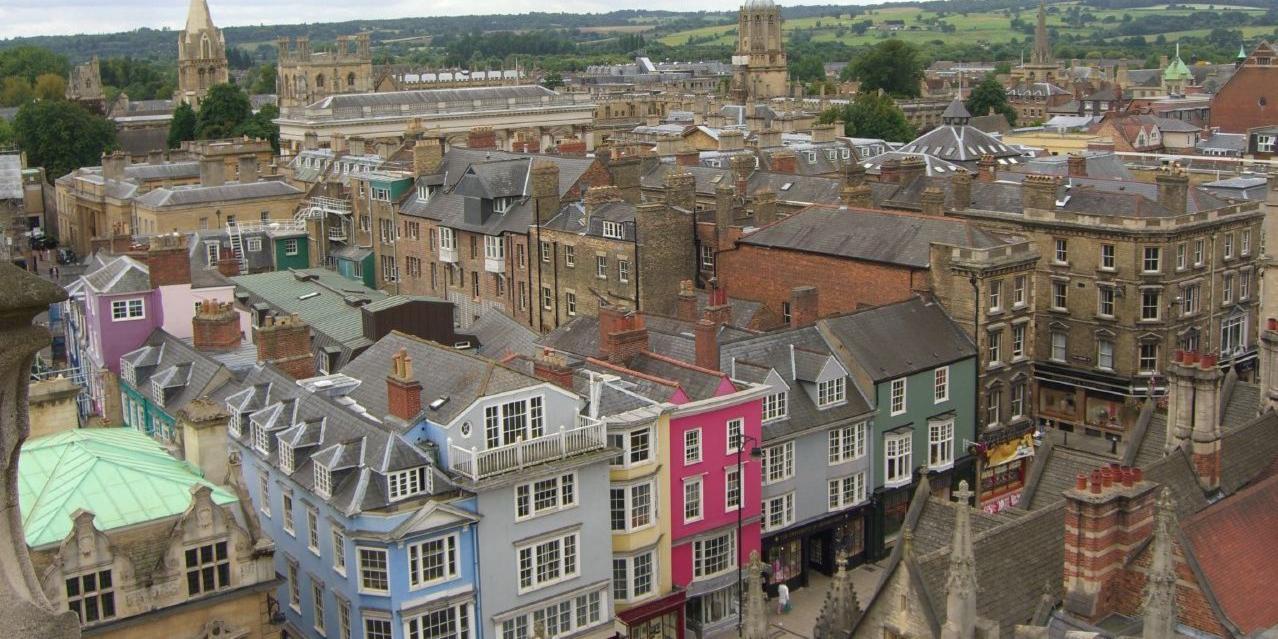Experience Oxfordshire (EO), the destination management organisation for the county, has issued a press release to publicise the results of a survey on the effects the COVID-19 pandemic is having on the vitally important tourism sector of the economy. Thames Tap’s Hugh Blaza spoke with EO’s chief executive, Hayley Beer-Gamage and board member, Richard Venables, partner at surveyor VSL & Partners, about the effects of the crisis.
At around £2.28 billion and with a jobs count of around 40,000, the value of the sector to Oxfordshire economy cannot be overstated. It is hardly surprising that most businesses are reporting revenue drops in excess of 50 per cent and widespread cancellations of future bookings.
As Hayley Beer-Gamage puts it: “Lockdown is tough, but actually that was relatively easy to implement; the phased recovery and re-opening of the sector is going to be much more difficult.”
With social distancing likely to remain in place for the foreseeable future, even after the lockdown is relaxed, schools have gone back and offices re-opened, what will the landscape look like as we emerge, blinking, into the light? Hayley cited a number of examples based on ongoing dialogue she is having with local and national agencies:
- Country houses: visitors may only be allowed to visit the outside areas initially with numbers still restricted.
- Pubs and restaurants may be limited to 50 per cent capacity when lockdown starts to lift and owners are querying whether it will be viable for them to trade in these circumstances, given the reduced opportunity to increase revenue. Not all of these businesses have been able to offer takeaways and adapt.
- Hotels will find it challenging to open until they know the demand is there. Therefore, in destination terms we are now managing both the supply and demand side as there has to be enough supply available for visitors to return.
- Levels of employment will stay depressed because of reduced levels of activity and capacity.
- Day visits to Oxford city and the county will tempt travellers and inhabitants of London and other cities, but there may be wariness over using public transport due to social distancing.
- There won’t be as much cash for people to spend; the 20 per cent ‘furlough money’ hit which people are taking is what they would have been spending on visitor attractions and leisure time and that disposable income is not going to be there.
But whilst there are bound to be casualties, the good news shouldn’t be overlooked as the lifeblood of the visitor economy will continue to flow. In addition to the perennial attractions represented by the colleges, museums, parks and countryside, there are new attractions planned, such as the Cotswold Automotive Park with its Mullin Museum at Enstone. Once that’s under way, it will bring inward investment, construction work and 2,500 jobs.
Furthermore, it’s thought that, as a consequence of the crisis, local residents and businesses will do even more to encourage and welcome the visitors now they realise the extent to which the local economy depends on them. Destination marketing and management will assume far more importance.
It’s also hoped that conference activity will resume as the lockdown ends, although residential events in hotels will take longer to reappear.
And what of retail, one of the major attractions to the city and county where, in spite of the well – publicised struggles in the sector, Oxfordshire has some real success stories, including the revamped Westgate in the city and Bicester Village. Richard offered his views of how the sector will cope.
Like most, he acknowledges that retail will struggle, especially until the international visitors return. Retail rent inflation, driven by visitor economy, is bound to be hit and landlords will need to adjust.
The protection measures offered by the Government (including the rates holiday for 12 months and no forfeitures for next three months) are welcome. But while landlords will be pragmatic and offer rent deferments, it’s unlikely that they’ll agree to rent holidays.
And what of the High Street, already struggling before the pandemic hit? Will it be reinvented and if so as what? Councils, planners and businesses will have to be imaginative.
And how long will it take the sector to recover? Hayley and Richard agree that it may take between 18 and 24 months. Whilst gradual improvements will come through, the emphasis must be on a safe exit from lockdown and an acceptance that the old ways will have to change to ensure people can get out and about without risking their and others’ safety.
Lastly, the importance of support from the Government. By ensuring both central and local (through agencies such as the Local Enterprise Partnerships) are aware of how serious the effects of the crisis are, Experience Oxfordshire is performing a vital role in obtaining the support the sector needs until it revives.
For more information on Experience Oxfordshire go to https://www.experienceoxfordshire.org/
Image: MasterMan / CC BY (https://creativecommons.org/licenses/by/2.0)
© Thames Tap No 208 (powered by ukpropertyforums.com)








